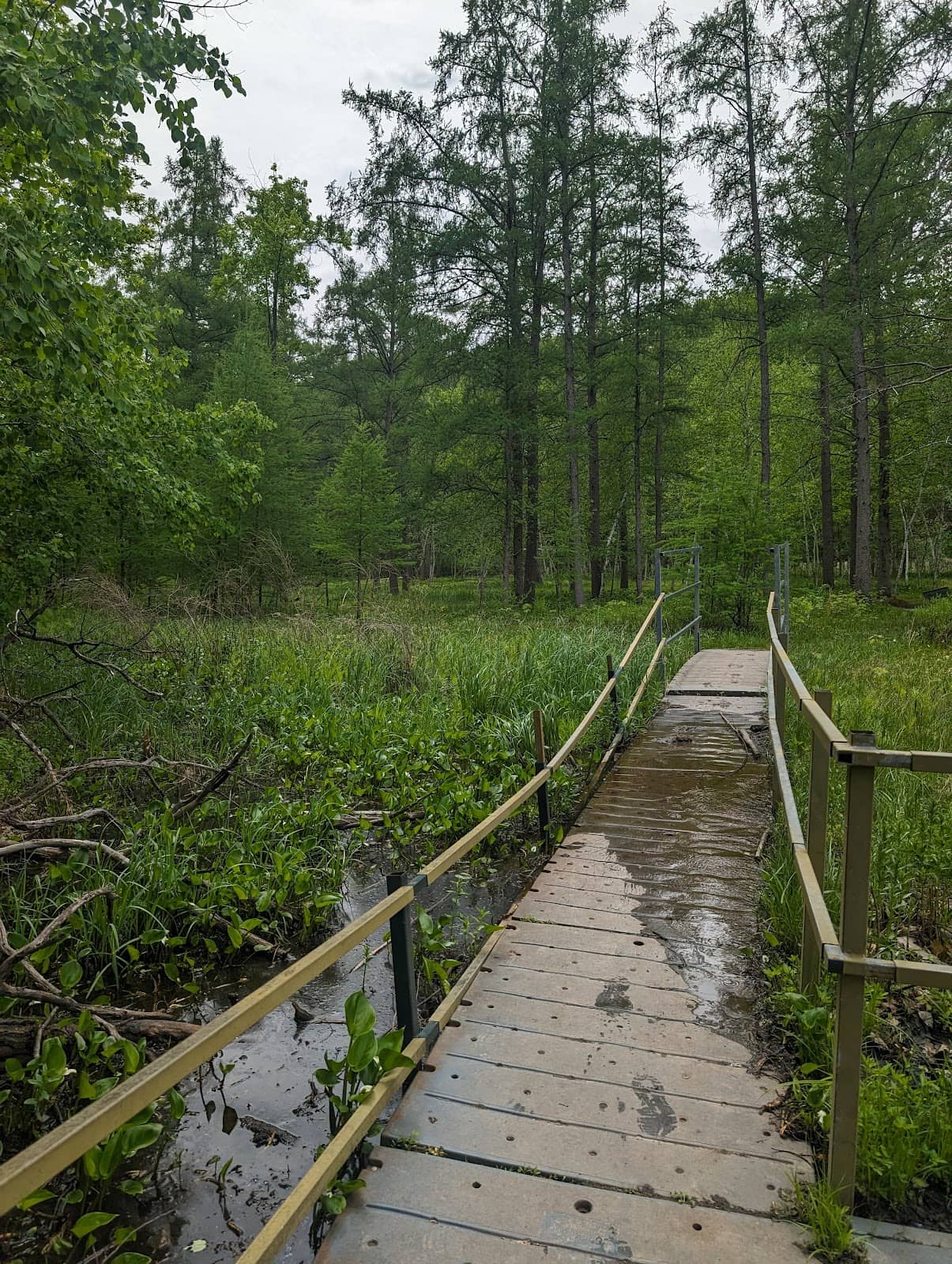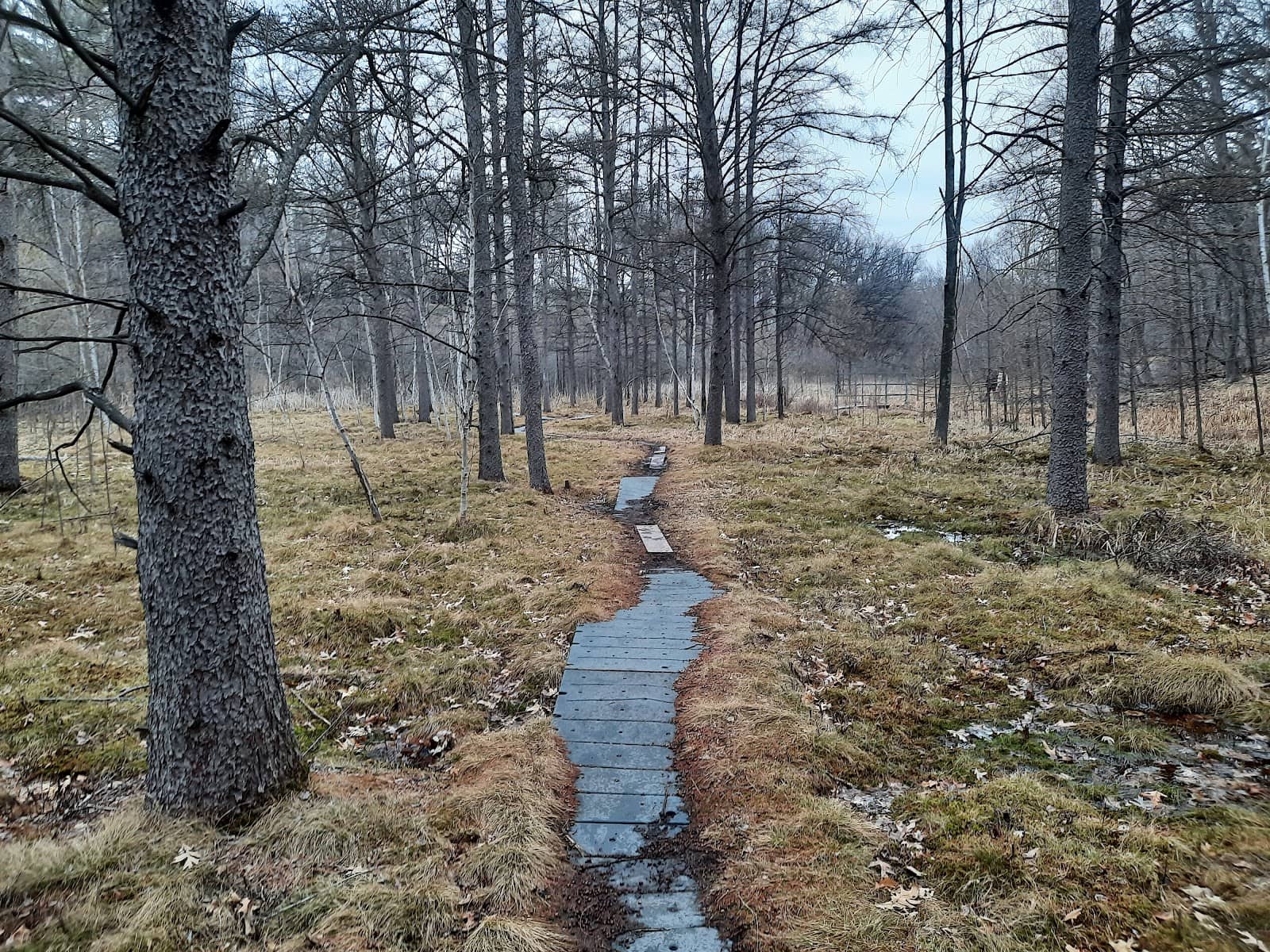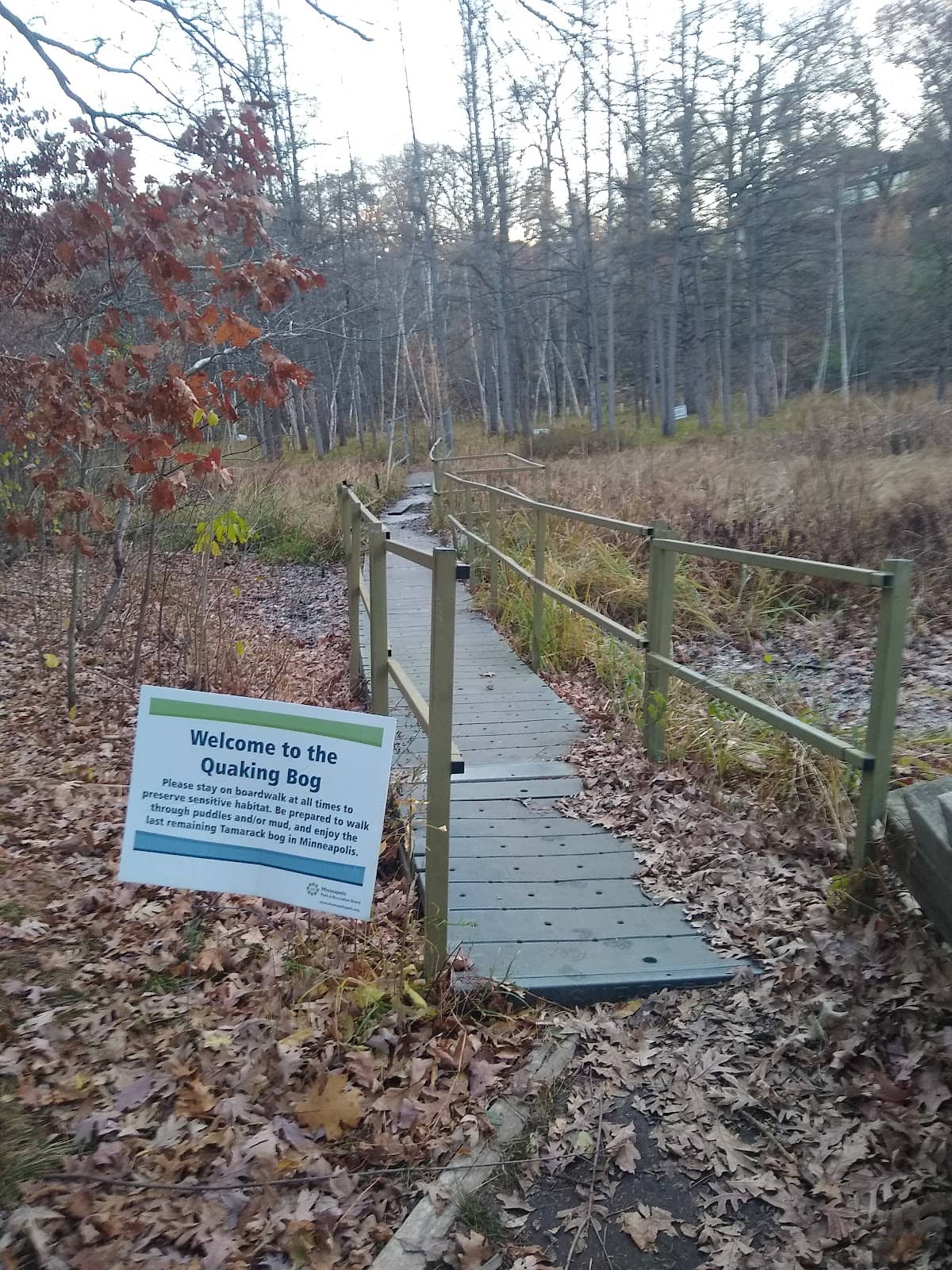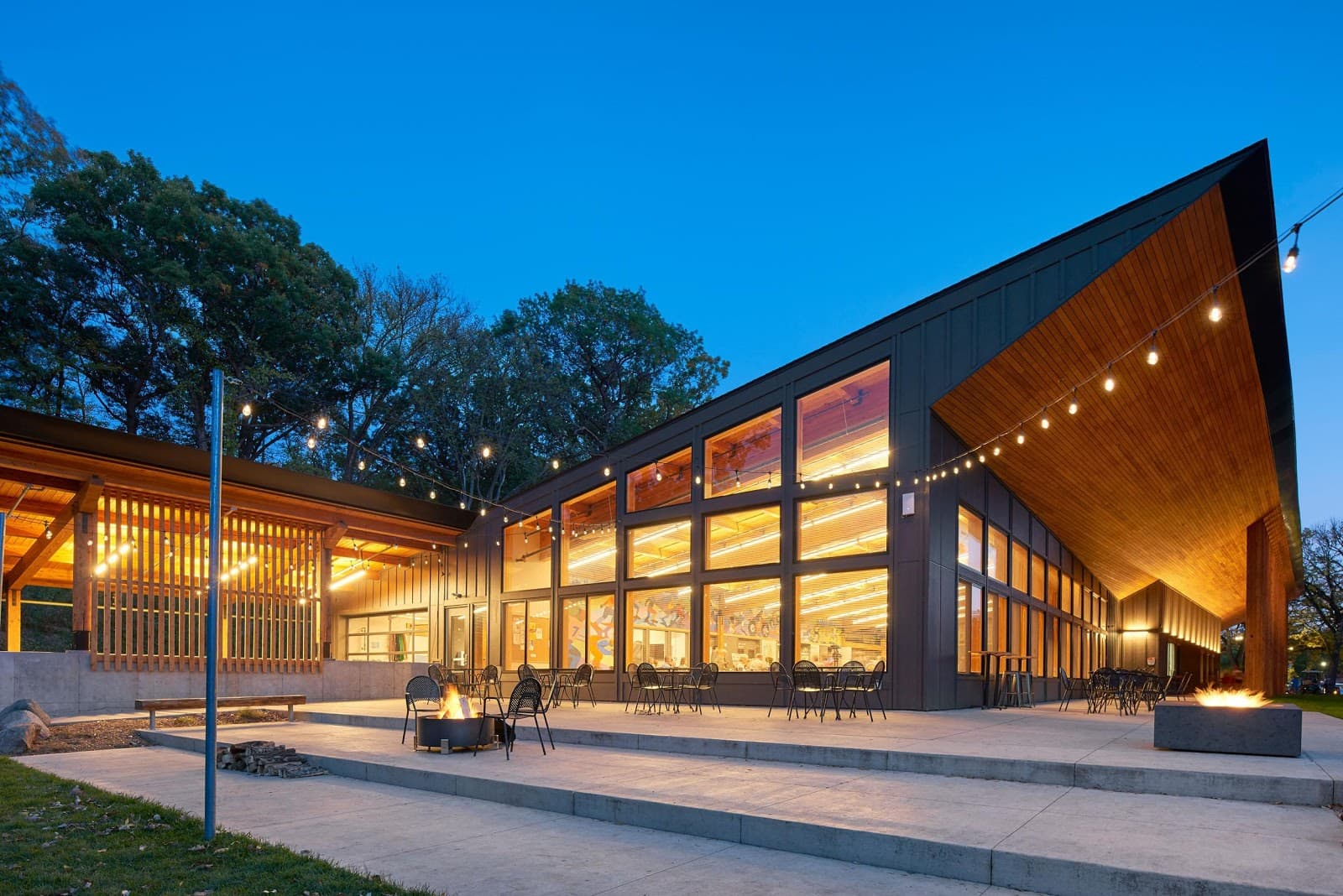
Quaking Bog
Experience the thrill of walking on a living, breathing landscape that shakes beneath your feet – a rare and unforgettable quaking bog adventure.

Highlights
Must-see attractions

Social
From TikTok & Reddit
Best Time
Tamaracks turn neon yellow!

Quaking Bog
Best Time
Tamaracks turn neon yellow!

Highlights
Must-see attractions
Experience the thrill of walking on a living, breathing landscape that shakes beneath your feet – a rare and unforgettable quaking bog adventure.
"It's like a nature trampoline, the whole way!"

👟 Wear Waterproof Shoes
The boardwalk can be wet and reclaimed by the bog. Waterproof boots are recommended!
📅 Check for Ranger Programs
Some quaking bogs, like Pinhook Bog, require ranger-led programs for access.

Highlights
Discover the most iconic attractions and experiences

The Bouncing Bog
Theodore Wirth Regional Park
Experience the thrill of walking on a floating mat of moss and vegetation that shakes with every step. It's like nature's trampoline!

Tamarack Trees in Fall
Theodore Wirth Regional Park
Witness the stunning transformation of tamarack trees to a brilliant neon yellow during autumn, a truly picturesque sight.

Carnivorous Plants
Pinhook Bog (Indiana Dunes National Park)
Discover rare and fascinating carnivorous plants thriving in this unique wetland ecosystem.
Plans like a pro.
Thinks like you
Planning Your Visit
Prepare for a Unique Walk
Best Time for Tamarack Colors
Best Times
Insider Tips
from TikTok, Instagram & Reddit
👟 Wear Waterproof Shoes
The boardwalk can be wet and reclaimed by the bog. Waterproof boots are recommended!
📅 Check for Ranger Programs
Some quaking bogs, like Pinhook Bog, require ranger-led programs for access.
🚗 Parking Options
Paid parking is available at the Quaking Bog lot, but free parking is nearby at the beach.
🐶 Not Ideal for Dogs
This specific trail isn't great for dogs, but other trails in the area are dog-friendly.
Tips
from all over the internet
👟 Wear Waterproof Shoes
The boardwalk can be wet and reclaimed by the bog. Waterproof boots are recommended!
📅 Check for Ranger Programs
Some quaking bogs, like Pinhook Bog, require ranger-led programs for access.
🚗 Parking Options
Paid parking is available at the Quaking Bog lot, but free parking is nearby at the beach.
🐶 Not Ideal for Dogs
This specific trail isn't great for dogs, but other trails in the area are dog-friendly.
🚶♀️ Stay on Trails
Protect this fragile habitat by staying on marked paths.
What Travellers Say
Reviews Summary
Visitors rave about the unique 'quaking' sensation of the bog, describing it as a natural trampoline. The fall colors, especially the neon yellow tamaracks, are a major highlight. Some find the parking fees and the short length of the bog trail to be minor drawbacks, but the overall experience is highly memorable.
"Awesome walk, bring shoes that can get wet, the walk way is floating."
chris parrish
"The actual big trail is short and narrow, but cool. The adjacent parking lot is a small pay lot, which sucks. There are other trails you can access from the trail head, mostly mountain bike trails, bus some hiking as well."
Lee Witte
"If you park in the quaking bog parking lot, the signs easily direct you to the trail. It was very beautiful but be warned that the bog is reclaiming many of the sections of the plastic boardwalk, so I'd recommend waterproof hiking boots. Also if you're on a walk with your dog, this section is not great for them but there are plenty of other normal hiking trails in this zone of Theo Wirth."
Alyssa Kennedy
What People Like
What People Dislike
Frequently Asked Questions
🚇 🗺️ Getting There
The Quaking Bog is often located within larger parks like Theodore Wirth Regional Park or Indiana Dunes National Park. Check the specific park's website for directions to the bog's entrance or designated parking areas.
Parking availability varies. Some locations have dedicated paid lots, while others offer free parking nearby. It's advisable to check for parking information specific to the bog you plan to visit.
Public transport options depend on the bog's location. For bogs within city parks, public transit might be feasible. Research local bus or train routes for the specific park.
Yes, many quaking bog areas are part of larger trail systems. You can often find adjacent hiking or mountain bike trails to extend your exploration.
Using GPS or a park map is recommended. Signs are usually posted to direct visitors to the Quaking Bog trail from the parking area.
🎫 🎫 Tickets & Entry
Entry requirements vary. Some bogs are freely accessible, while others, like Pinhook Bog, may require participation in ranger-led programs or specific permits. Always check the official park or preserve website.
Some locations have associated parking fees or entrance fees for the park. Research the specific site to understand any costs involved.
Operating hours are typically tied to the park or preserve it's located within. Many natural areas are open from dawn to dusk, but it's best to confirm.
This depends on the location. Some bogs are accessible independently, while others are protected and only accessible via guided tours to minimize environmental impact.
For popular ranger-led programs, especially during peak seasons, booking well in advance is highly recommended as spots can fill up quickly.
🎫 🚶 Onsite Experience
Expect the ground to shake and move beneath your feet, like a trampoline! It's a unique sensation caused by a floating mat of vegetation over water.
The actual bog trail is often short and narrow, but the experience is unique. The terrain can be uneven and wet, so sturdy footwear is essential.
Quaking bogs are rich ecosystems. You might spot various birds, insects, and unique plant life, including carnivorous plants.
Exploring the bog itself is usually a short experience, often taking less than an hour. However, you can spend more time on adjacent trails.
Accessibility can be limited due to the natural terrain and boardwalks. It's best to check with the specific park for any accessibility information.
📸 📸 Photography
Capture the unique 'quaking' effect, the vibrant fall colors of tamarack trees, and the diverse plant life. Wide-angle lenses can be great for the expansive bog views.
Yes, but exercise caution. Stay on the boardwalk and be mindful of your footing while composing shots to avoid slips or falls.
Early morning or late afternoon light offers softer, more dramatic lighting. Fall colors are particularly stunning during these golden hours.
Drone usage is often restricted in natural areas and parks to protect wildlife and preserve the visitor experience. Always check park regulations before flying a drone.
Use a slightly wider aperture for landscape shots to ensure depth of field. For capturing movement, consider a faster shutter speed.
For Different Travelers
Tailored advice for your travel style
👨👩👧 Families with Kids
Tips for families:
* Wear waterproof shoes: Essential for keeping little feet dry.
* Keep it short and sweet: The bog trail itself is usually short, perfect for shorter attention spans.
* Combine with other park activities: Many bogs are in larger parks with other trails or amenities that can make for a full day of family fun.
🚶♀️ Nature Enthusiasts & Hikers
Recommendations:
* Visit in the fall: Experience the stunning colors of the tamarack trees.
* Explore surrounding trails: Many bogs are part of larger park systems with more extensive hiking opportunities.
* Learn about the ecosystem: Research the unique flora and fauna of bogs before your visit to enhance your appreciation.
📸 Photographers
Photography tips:
* Capture the movement: Experiment with shutter speeds to convey the 'quaking' sensation.
* Focus on fall colors: The neon yellow tamaracks are a photographer's dream.
* Use a wide-angle lens: To capture the expansive bog landscapes and unique textures.
Deep Dives
In-depth insights and expert knowledge
Understanding the Quaking Bog Phenomenon
These unique environments develop over thousands of years through the accumulation of organic matter. The waterlogged, acidic conditions inhibit decomposition, allowing peat to build up. This process creates a self-sustaining ecosystem that supports specialized flora and fauna, including many rare and endangered species. The 'quaking' sensation is a direct result of this living, floating mat of plant life suspended over water.
Visiting a quaking bog offers a tangible connection to these ancient natural processes. The feeling of the ground moving beneath your feet is unlike any other, providing a memorable and educational experience. It's crucial to remember that these are delicate habitats, and staying on designated paths is essential for their preservation.
The Best Time to Visit for Visuals
The vibrant yellow of the tamaracks against the dark, rich hues of the bog and the often crisp autumn sky creates a breathtaking contrast. This seasonal transformation makes the Quaking Bog a prime destination for photographers and nature enthusiasts seeking stunning autumnal landscapes. The cooler temperatures also make for a more comfortable hiking experience.
Beyond the fall colors, other times of year offer their own unique charm. Spring might reveal emerging wildflowers, while summer offers lush greenery. However, for that iconic, postcard-worthy view, the autumn foliage is unparalleled.
Protecting Fragile Ecosystems
To help protect these unique environments, it's vital to stay on marked trails and boardwalks. Avoid stepping off the designated paths, even if it seems like the ground is firm. The depth of the bog can be unpredictable, and straying can damage the vegetation and potentially lead to injury.
Furthermore, do not disturb or remove any plants or wildlife. These bogs are home to specialized species that are often rare or endangered. By respecting the natural environment and following park guidelines, visitors can ensure that these natural wonders are preserved for future generations to enjoy.






Social
from TikTok, Instagram & Reddit